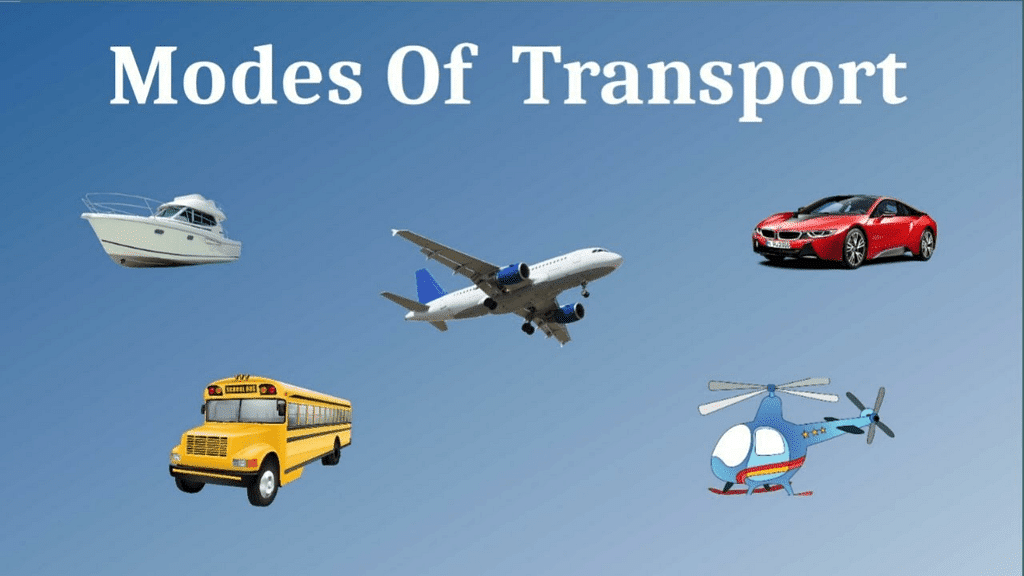NCERT Solutions for Class 6 Science - Motion and Measurement of Distances
Q1. Give two examples each, of modes of transport used on land, water and air.
Ans:
Land transport: Bus, train, motorbike.
Water transport: Boat, Ship, steamer.
Air Transport: Aeroplane, Helicopter.

Q2. Fill in the blanks:
(i) One metre is ______________ cm.
(ii) Five kilometres is ______________ m.
(iii) Motion of a child on a swing is ______________.
(iv) Motion of the needle of a sewing machine is ______________.
(v) Motion of wheel of a bicycle is______________.
Ans:
(i) One metre is 100 cm.
(ii) Five kilometres is 5000 m.
(iii) The motion of a child on a swing is periodic motion.
(iv) The motion of the needle of a sewing machine is periodic motion.
(v) The motion of the wheel of a bicycle is circular motion.
Q3. Why can a pace or a footstep not be used as a standard unit of length?
Ans: A pace or a footstep not be used as a standard unit of length because the size of a pace and footstep vary from person to person. This will lead to confusion while measuring the lengths by different persons. We should use standard units like the International System of Units (SI Units).
Q4. Arrange the following lengths in their increasing magnitude:
1 metre, 1 centimetre, 1 kilometre, 1 millimetre.
Ans: 1 millimetre, 1 centimetre, 1 metre, 1 kilometre
Q5. The height of a person is 1.65 m. Express it into cm and mm.
Ans: We know that,
1 metre = 100 cm
1 metre = 1000 mm
So, 1.65 m = 1.65 × 100
= 165 cm
1.65 m = 1.65 × 1000
= 1650 mm
Q6. The distance between Radha's home and her school is 3250 m. Express this distance into km.
Ans: We know that 1 m = 1/1000 km
So, 3250 m = 3250/1000 km
= 3.25 km
Q7. While measuring the length of a knitting needle, the reading of the scale at one end is 3.0 cm and at the other end is 33.1 cm. What is the length of the needle?
Ans: The length of the needle = 33.1 cm – 3.0 cm = 30.1 cm
Q8. Write the similarities and differences between the motion of a bicycle and a ceiling fan that has been switched on.
Ans:
Similarity: The blades of a fan and the wheels of a bicycle show circular motion.
Difference: Bicycles move in rectilinear motion, but the fan does not move in rectilinear motion.
Q9. Why would you not like to use a measuring tape made of an elastic material like rubber to measure distance? What would be some of the problems you would meet in telling someone about a distance you measured with such a tape?
Ans: An elastic measuring tape will not give accurate measurements as it stretches in length and reduces in size when stretched. When we express measurements taken with elastic tape, we have to tell whether the tape was stretched. Hence, it is very difficult to tell the measurement taken from an elastic tape.
Q10. Give two examples of periodic motion.
Ans:
- Rotation of Earth
- Motion of Pendulum
- Vibrating wire of the guitar, etc.
Any two examples can be used.
|
100 videos|261 docs|49 tests
|
FAQs on NCERT Solutions for Class 6 Science - Motion and Measurement of Distances
| 1. What is motion and how is it related to the measurement of distances? |  |
| 2. How do we measure distance? |  |
| 3. What are the different units used to measure distance? |  |
| 4. What is the difference between distance and displacement? |  |
| 5. How does the measurement of distances help in various fields and everyday life? |  |



















